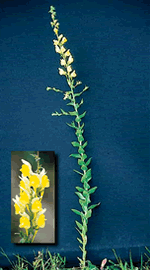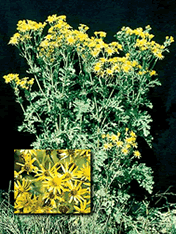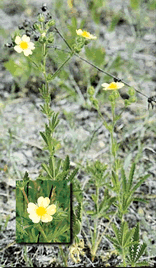
Invasive plants are typically introduced to British Columbia
through human activities. Generally these species originate
from Europe and Asia. These invasive plants lack natural
predators and pathogens that would otherwise keep their
populations in check. A common characteristic of all
invasive plants is their aggressive, competitive behaviour.
In general, they out compete native plants for moisture,
nutrients, and sunlight. In wetlands invasive plants
can rob waterfowl and mammals of their food sources,
nesting areas, and access to water which they need
for protection from predators. Invasive plants often
establish themselves in soils disturbed from development
of roads, utility lines, trails, commercial recreation
sites, agriculture, etc. Wildlife, livestock, machinery,
recreational vehicles, people, wind, and water transport
seeds from existing invasive plant infestations to
new sites. Once established, invasive plants have a
tremendous capacity to invade adjacent, undisturbed
natural plant communities displace wildlife and disrupt
natural ecosystem functions.

The Ecosystems Section of ESD, Okanagan Region has developed
and implemented an Invasive Plant Strategy, which assists
in invasive plant identification as well as management
practices within provincial parks and protected areas.
This strategy incorporates an integrated and collaborative
approach including early detection. Early detection
allows the opportunities for eradication of these new
outbreaks. In addition to early response to new invasive
plants, efforts to manage and contain existing, large-scale
infestations remain a priority. Successful long-term
management of invasive plants relies on an integrated
approach. This entails a combination of biological,
chemical, and mechanical control methods. Integrated
invasive plant management and improved overall land
management is the key to reducing the threats of invasive
plants.

As land managers, the Ministry of Environment is responsible
for maintaining biodiversity, while maintaining healthy
ecosystems for native plant and animal species, in
parks and protected areas. To accomplish this, a key
component is public education in the identification
of invasive plant, their biology, their impacts and
treatment options. Ensuring biological diversity, and
a balanced ecosystem for the enjoyment of future generations,
requires the diligent effort of all agencies, stakeholders,
and the public.
Invasive Plant Alert
(PDF 160KB)
|
|